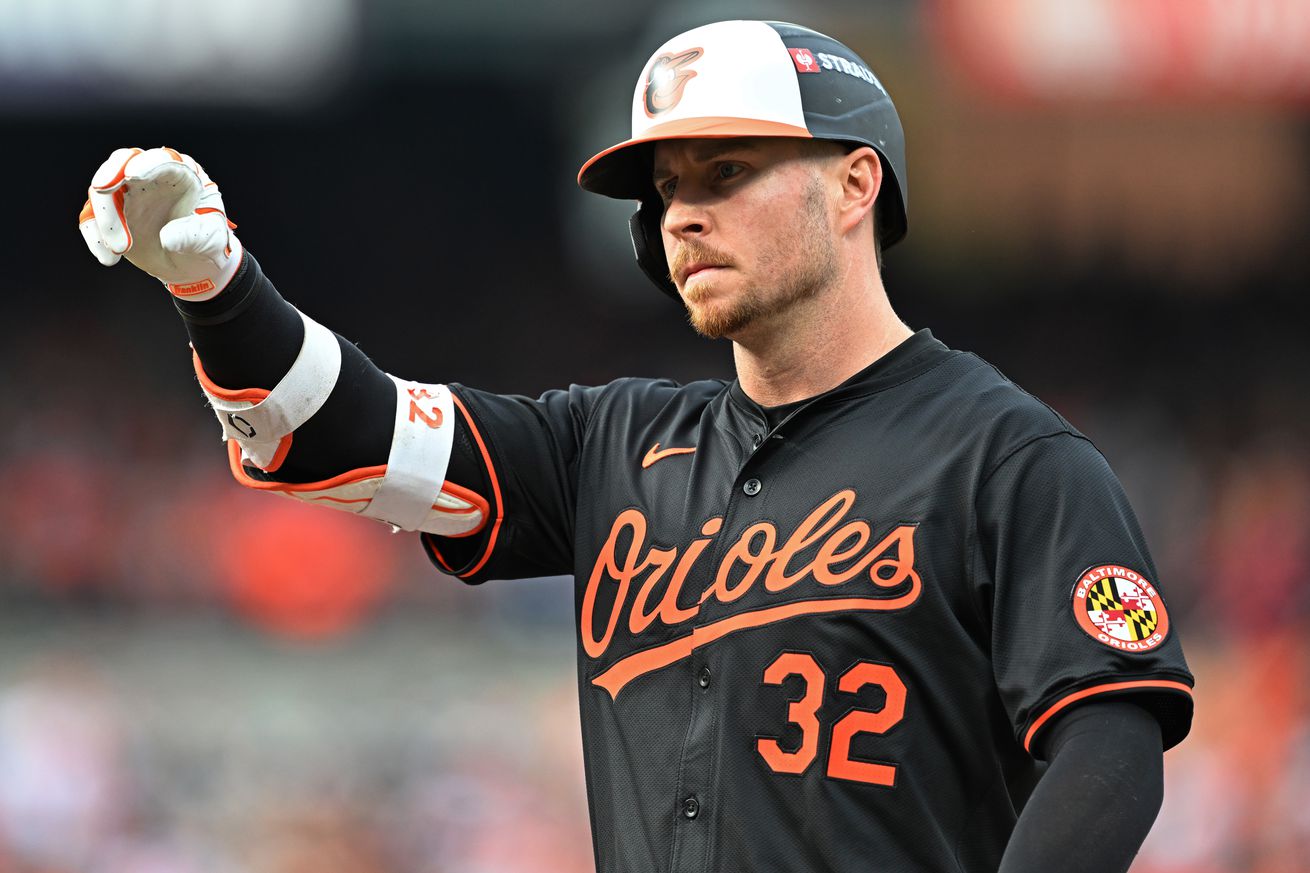
Projections are expecting O’Hearn to perform about how he did in each of the past two seasons.
When the Orioles were bumbling their way through the 2019-21 seasons with rosters chock full of guys who had no business being in the majors, the only comfort O’s fans had was imagining all of the prospects who were going to help things get better one day. No one spent these years thinking about Ryan O’Hearn, who over this same time period was a negative-value player annually with the Royals.
That no one was thinking of him in this time has not prevented O’Hearn becoming a valuable role-player for the last two seasons of Orioles baseball. His role is a lefty first base/designated hitter bat who is kept away from lefty pitchers if at all possible. If he played any other position, or if he graded out as a better defender when used at first base, he might be more exciting, but still: There’s value in an above-average bat on the strong side of a platoon. He also doesn’t strike out very much.
The Orioles showed some confidence in O’Hearn being able to repeat at something like his level over the past two years when they picked up his $8 million team option for this season. They could have decided they didn’t need a one-dimensional lefty hitter, especially with Heston Kjerstad waiting in the wings for possibly the same role. There may be some impatience about that if O’Hearn isn’t doing at least as well as he’s recently done.
What is expected from O’Hearn for the upcoming season? Here’s what the two biggest projection systems, ZiPS and PECOTA, see as the 50th percentile outcomes for O’Hearn for 2025:
- ZiPS: .267/.328/.443, 16 HR, 1.3 fWAR
- PECOTA: .263/.321/.425, 16 HR, 1.9 WARP
In contrast to some of the other players we’ve looked at so far in this series, these two projections are pretty close to one another as far as what’s expected out of O’Hearn. In terms of his hitting ability, they’re projecting that he will basically do as well, when factoring in park and league adjustments, as he has done the last two seasons.
O’Hearn’s OPS dropped by 40 points going from 2023 to 2024, but due to the league-wide drop-off in offense, this had the same adjusted OPS+ number of 122. The other adjusted stat, Weighted Runs Created (wRC+), which is tracked on FanGraphs, saw O’Hearn at 118 two years ago and 119 last year. He was quietly one of the better Orioles hitters. He’s now projected for a 120 wRC+ for 2025. (Reminder: These “plus” stats have 100 as the average and every point above is a percentage point above the average player.)
The case for the over
You have to be a serious Orioles optimist to look at O’Hearn and think he’s suddenly, at age 31, going to blow past the fairly consistent performance of the last two seasons. The O’s already keep O’Hearn away from lefties as much as they can; he faced them just 44 times a year ago. That might have been an even lower number if not for Ryan Mountcastle’s time on the injured list, but there’s not a ton of juice left to squeeze out of platoon advantage.
Some guys really find a boost for their free agent platform year. We just saw this happen last year with Anthony Santander, who jumped from a career high of 33 home runs to 44. This is O’Hearn’s walk year since he negotiated a team option for 2025 a year ago and the Orioles exercised that option. I am as powerless as ever to stop anyone who really wants to believe something from believing it.
The case for the over is probably something like: O’Hearn suddenly hits 25 home runs without giving up much value elsewhere. There’s some reason for optimism in his batted ball data from 2024: O’Hearn had expected stats that were well in excess of his actual performance. Some of that might have just been bad luck that could even out.
The case for the under
You have to be a serious Orioles pessimist to look at O’Hearn and think that he’s going to fall off the table from the fairly consistent performance of the last two seasons. A year ago, it might have been easier to slip into thinking that O’Hearn’s 2023 was a one-year aberration and he’d slip back to his Royals ways. The O’s seem to have unlocked some durable multiple-year adjustment.
Still: O’Hearn’s on the wrong side of 30 now, and although the projections aren’t thinking that will hit him yet, time does catch up to some guys before it hits others. He doesn’t have to slip by much to fall below last year’s number. The chances of the under are probably greater than the chances of the over, just because there are more scenarios that could lead to the under than the over.
**
During those dark years, it was the visions of the then-prospects charging up from the minors and filling up the Orioles roster some day that kept many people going. The picture now that the O’s have been good for a couple of years is a bit more nuanced. No roster will be filled with 13 position players who used to be big prospects. You need to mix in O’Hearn-type players, especially when these are platoon spots rather than every day playing roles.
The Orioles clearly believe that they can get another year of dependable results out of O’Hearn. That’s why they exercised his option. He’s not an exciting guy who hits a ton of dingers or who quietly offers crucial defensive value or anything like that, but there’s a role for him and for two years he’s played it well.
